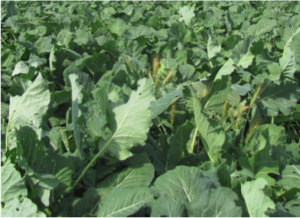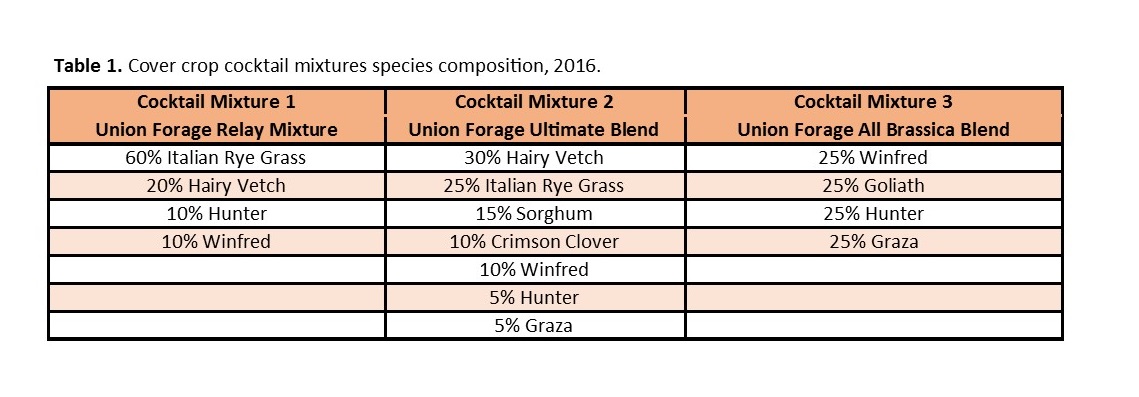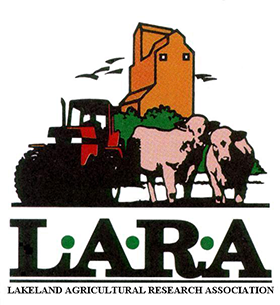Cocktail Cover Crops for Livestock Feed
 Cocktail cover crops have been gaining in popularity in recent years, with the acres seeded in Alberta slowly increasing. These crops can be an important tool for producers to generate benefits on farm such as improved soil health, weed suppression, insect management and forage production for livestock feed.
Cocktail cover crops have been gaining in popularity in recent years, with the acres seeded in Alberta slowly increasing. These crops can be an important tool for producers to generate benefits on farm such as improved soil health, weed suppression, insect management and forage production for livestock feed.
Producers have many different options to choose from when it comes to cocktail cover crop species and each species has different abilities to provide depending on root and plant structure and physiology. Each operation is different and, depending on the desired results of the mixture, cocktail cover crops can be from 5 or 7 to over 15 different species or varieties.
Due to the high nutritional content of many species that are included in cocktail cover crop mixtures, such as brassicas and legumes, it is recommended to seed such species with a cereal crop such as oats or barley to balance out the ration. Recommendations are that brassica species should not comprise more than 50% of the cattle’s feed intake.
Cocktail cover crops can be seeded at various times of the year depending on the required end use. Many brassica species will hold quality late into the fall and early winter, making them an ideal method to extend the grazing season. In these cases, later spring seeding is recommended.
Demonstration:
The demonstration was seeded as three blocks, side-by-side at the LARA Fort Kent Research Site (NE25-61-5-W4) in early June. Prior to seeding, soil tests were conducted and a blend fertilizer was side-banded at the time of seeding.
The species composition of each cocktail mixture is illustrated in table 1. Due to the high quality of many of the species included in the mixtures, it is recommended to seed with a cereal crop at least 50% of recommended rate Therefore, each mixture was seeded with CDC SO-1 oats. Seeding was done with a ConservaPak air drill with 12” row spacing and the demonstrations were seeded to a depth of 0.5 – 1”.

Prior to harvesting of the demonstration, forage yield samples were taken, weighed and dried to determine dry matter (DM) yield. An additional sample was collected, frozen and sent to A & L Canada Laboratories for wet chemistry analysis.
To view the full report from 2016, Click Here.
To read more about Annual Forages, Click Here.



